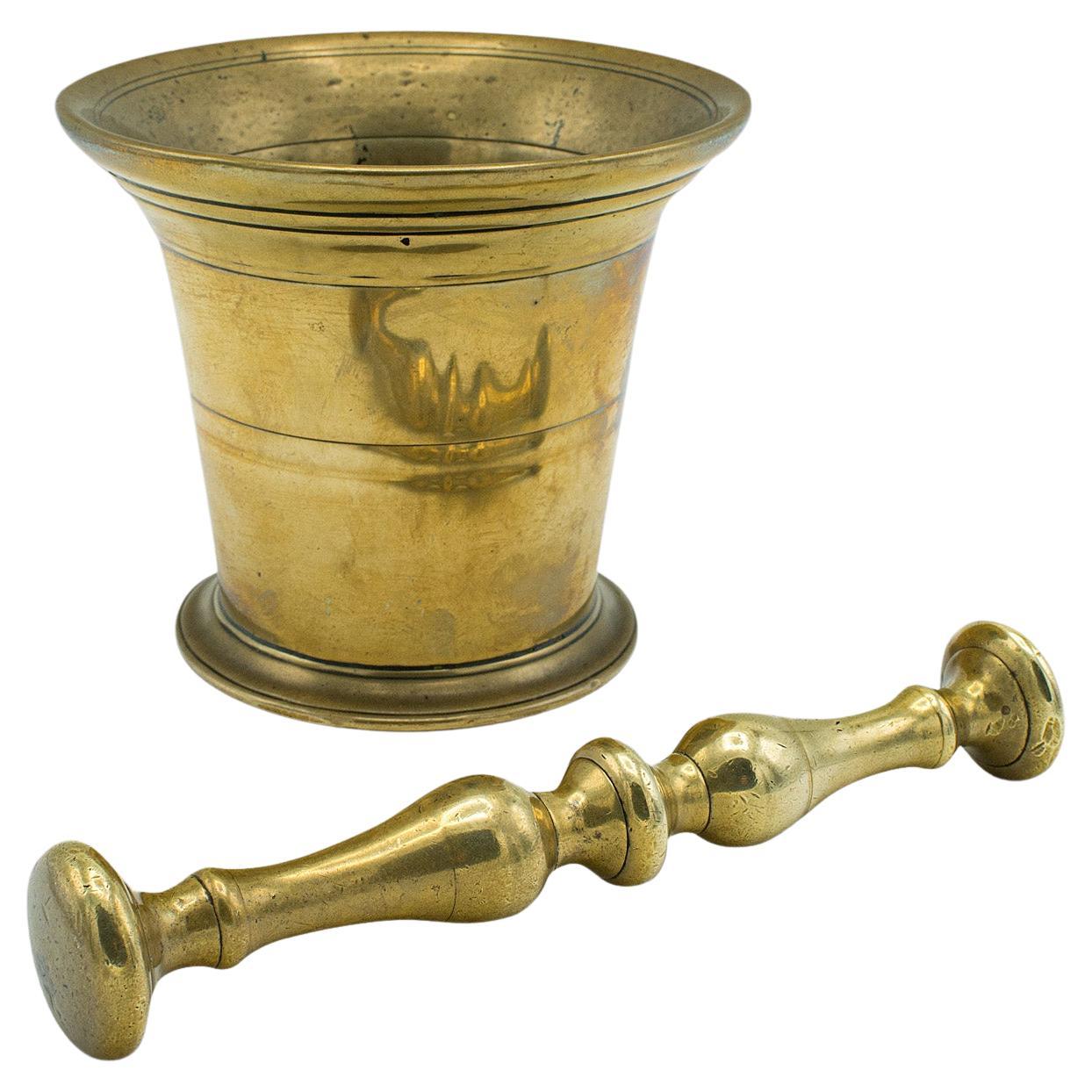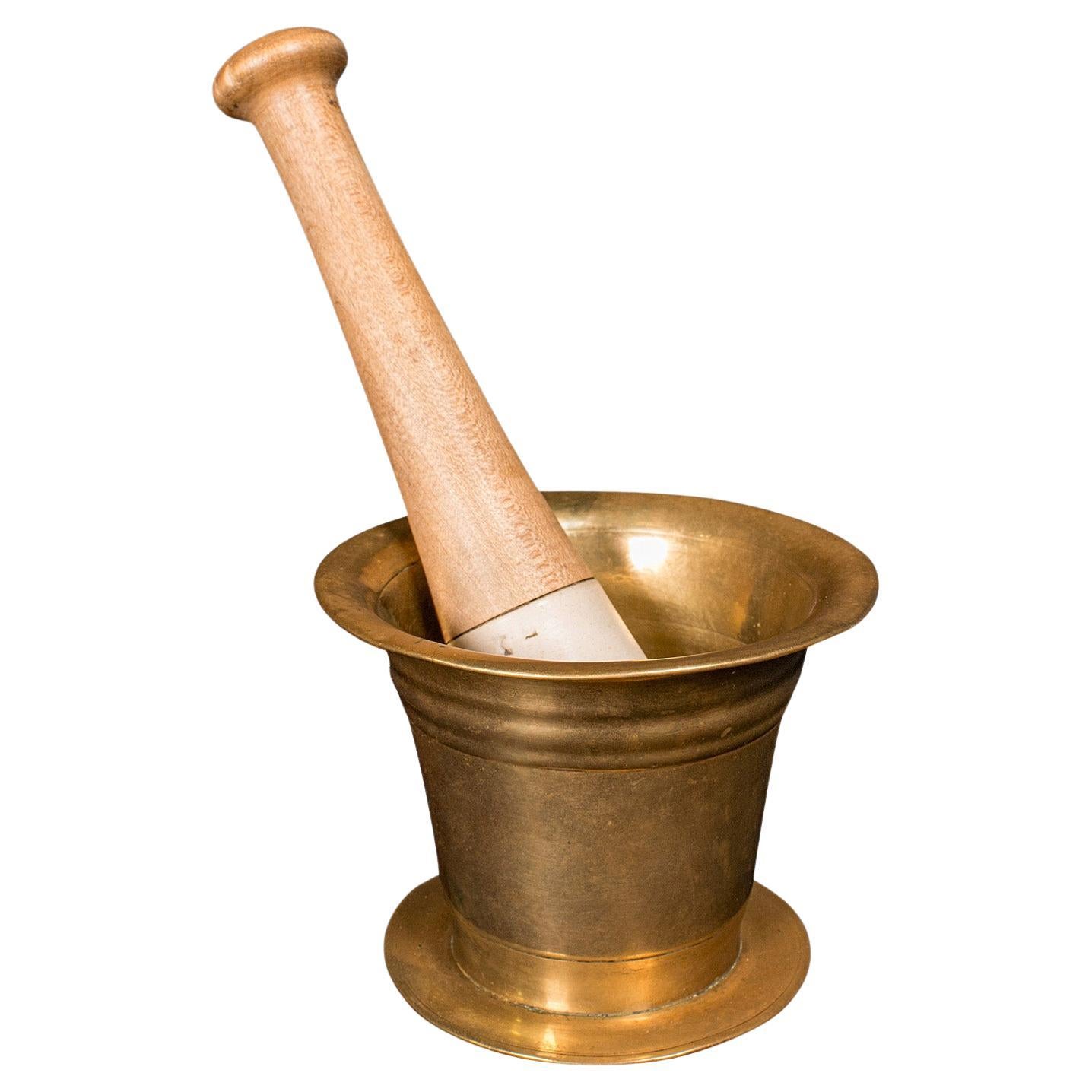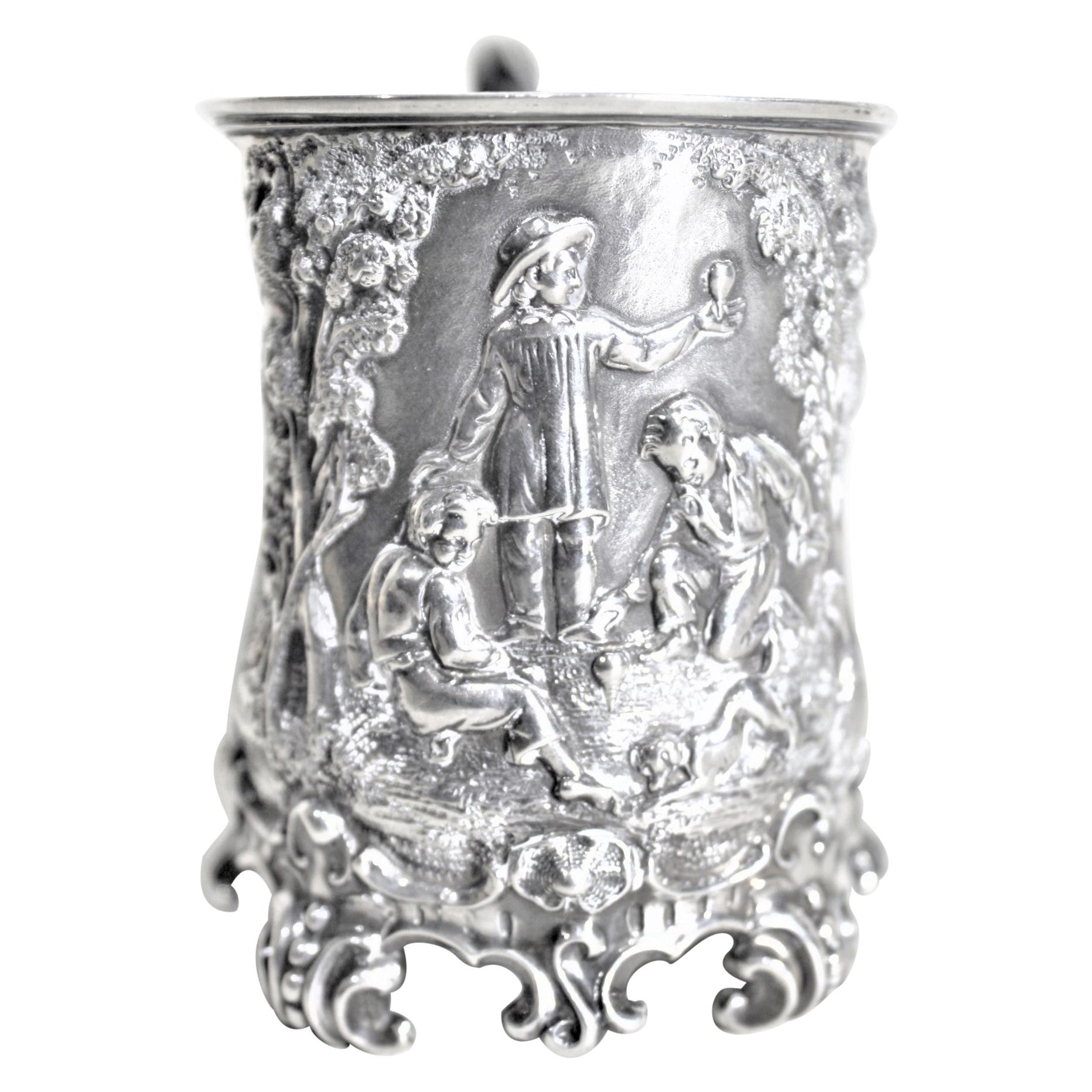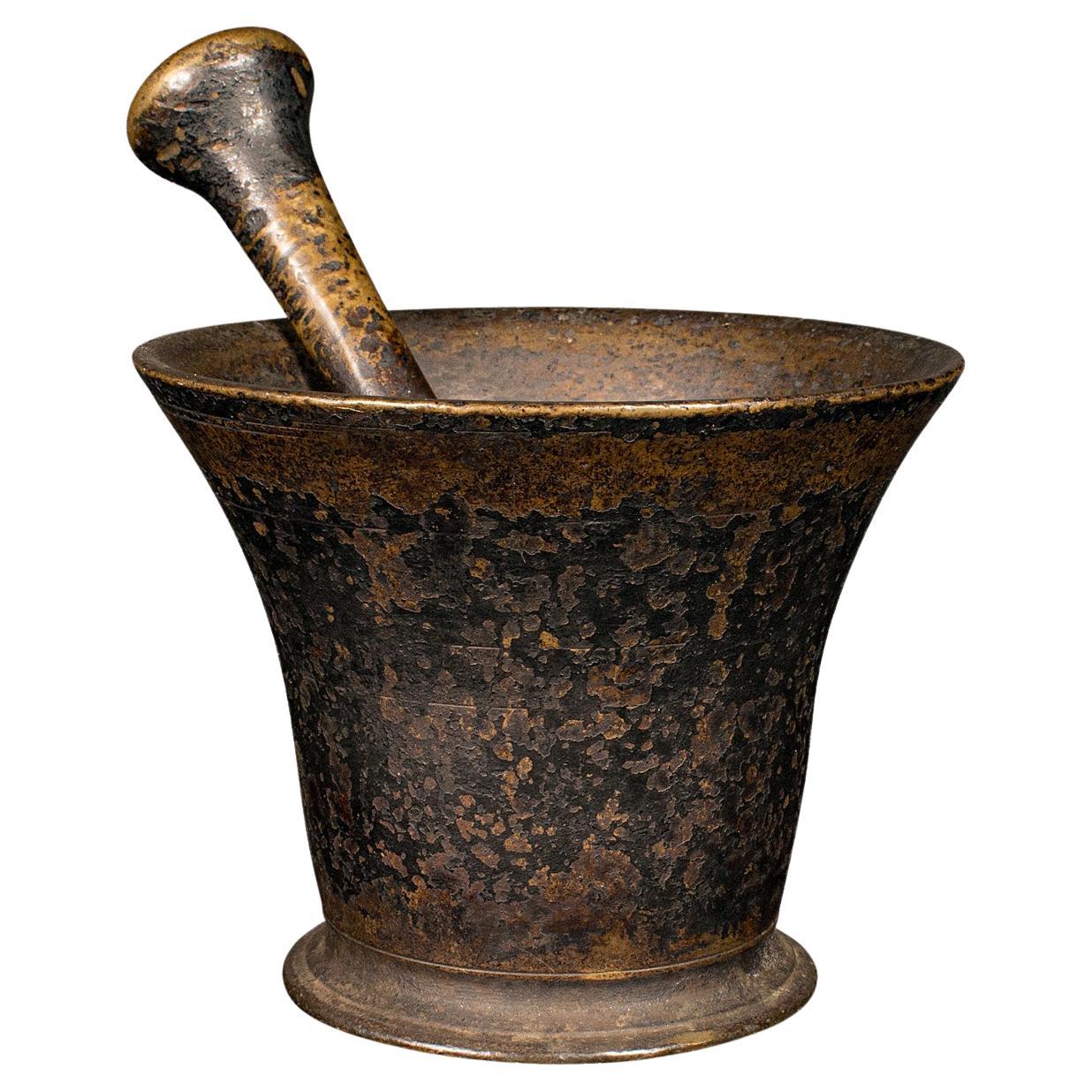Items Similar to Antique Pharmacist's Medicine Cup, English, Glass, Apothecary Measure, Victorian
Want more images or videos?
Request additional images or videos from the seller
1 of 13
Antique Pharmacist's Medicine Cup, English, Glass, Apothecary Measure, Victorian
About the Item
This is an antique pharmacist's medicine cup. An English, glass and leather apothecary measure, dating to the Victorian period, circa 19000.
A fascinating pocket medicine cup and miniature measure
Displaying a desirable aged patina and in good order
Hand-etched glass with measures for spoonfuls, presenting a bright appearance
Protected within a quality, patinated leather case with a distinctive purple interior
Case lid reads 'Medicine Glass, Minim Measure'
This is a charming antique pharmacist's medicine cup, utilised by travelling chemists to offer their concoctions. In good order and nicely presented, delivered polished and ready to display.
Dimensions:
Max width: 7cm (2.75'')
Max depth: 7cm (2.75'')
Max height: 6.5cm (2.5'')
Cup width: 5cm (2'')
Cup depth: 5cm (2'')
Cup height: 6.5cm (2.5'').
- Dimensions:Height: 2.56 in (6.5 cm)Width: 2.76 in (7 cm)Depth: 2.76 in (7 cm)
- Materials and Techniques:
- Place of Origin:
- Period:
- Date of Manufacture:circa 1900
- Condition:Wear consistent with age and use. Presented in very good antique condition.
- Seller Location:Hele, Devon, GB
- Reference Number:
About the Seller
5.0
Platinum Seller
These expertly vetted sellers are 1stDibs' most experienced sellers and are rated highest by our customers.
Established in 2005
1stDibs seller since 2017
839 sales on 1stDibs
Typical response time: 1 hour
- ShippingRetrieving quote...Ships From: Hele, Devon, United Kingdom
- Return PolicyA return for this item may be initiated within 14 days of delivery.
More From This SellerView All
- Small Antique Pharmacist's Measuring Cup, English, Glass, Apothecary, VictorianLocated in Hele, Devon, GBThis is a small antique pharmacist's measuring cup. An English, glass and leather apothecary measure, dating to the late Victorian period, circa 190...Category
Antique Late 19th Century British Late Victorian Scientific Instruments
MaterialsGlass
- Antique Apothecary Medicine Cup, English, Glass, Chemist's Measure, VictorianLocated in Hele, Devon, GBThis is an antique apothecary medicine cup. An English, glass and leather chemist's measure, dating to the Victorian period, circa 1880. A delightful pocket medicine cup, useful f...Category
Antique Late 19th Century British Glass
MaterialsGlass
- Antique Apothecary Mortar and Pestle, English, Brass, Chemist, Victorian, C.1850Located in Hele, Devon, GBThis is an antique apothecary mortar and pestle. An English, brass chemist's shop aid, dating to the early Victorian period, circa 1850. ...Category
Antique Mid-19th Century British Early Victorian Scientific Instruments
MaterialsBrass
- Antique Apothecary Mortar and Pestle, English, Bronze, Beech, Chemist, VictorianLocated in Hele, Devon, GBThis is an antique apothecary mortar and pestle. An English, bronze and beech chemist's aid, dating to the Victorian period and later, circa 1890. Graced with a bright appearance a...Category
Antique Late 19th Century British Victorian Scientific Instruments
MaterialsBronze
- Antique Chemist's Mortar & Pestle, English, Bronze, Apothecary, Georgian, C.1720Located in Hele, Devon, GBThis is an antique chemist's mortar & pestle. An English, weathered bronze apothecary aid, dating to the early Georgian period, circa 1720. Superb, 300 year old example with appeal...Category
Antique Early 18th Century British Georgian Scientific Instruments
MaterialsBronze
- Trio Of Antique Mortars, English, Bronze, Apothecary Pot, William III, C.1700Located in Hele, Devon, GBThis is a trio of antique mortars. An English, bronze apothecary instrument, dating to the William III period, circa 1700. Charming trio, ideal for decorative display or as planting...Category
Antique Early 18th Century British William and Mary Scientific Instruments
MaterialsBronze
You May Also Like
- XIX Century English Apothecary Set Cabinet Medicines & Perfumery J Hexam ChymistLocated in Milan, ITEnglish apothecary cabinet dated to the first half of the nineteenth century, mahogany box, brass handle and hinges and complete with key. The cabinet with a rectangular base is form...Category
Antique 19th Century British Scientific Instruments
MaterialsMahogany
- Antique English Victorian Sterling Silver Christening Cup with Boys Playing TopsLocated in Hamilton, OntarioThis antique sterling silver Christening cup was made in England in approximately 1848 in the period Early Victorian style. The front o...Category
Antique Mid-19th Century English Early Victorian Sterling Silver
MaterialsSterling Silver
- Set of Nine 19th C English Victorian Treen Ware Boxwood Medicine Bottle HoldersLocated in Haarlem, NLA set of nine 19th century Victorian treen turned boxwood medicine bottle holders. These containers were used for protecting delicate items such as glass apothecary bottles, perfume bottles, syringes, powder, ointment bottles, thermometers and other medical or vanity items. In two of the containers are glass bottles. Measurements: Large 18.5cm high, 8.5cm diameter, empty Large 18cm high, 8cm diameter, empty Medium 14.5cm high, 5.5cm diameter, glass bottle without stopper (wood chipped) Medium 13cm high, 6cm diameter, empty (crack in wood) Medium 12cm high, 5cm diameter, perfumed oil in glass bottle Medium 11cm high, 5cm diameter, empty Small 10cm high, 4cm diameter, talcum powder...Category
Antique Mid-19th Century British Victorian Scientific Instruments
MaterialsGlass, Boxwood
- Antique English Brass-Mounted Rosewood Complete Apothecary Case, Circa 1880.Located in New Orleans, LARare complete antique English London-made apothecary case, circa 1880. Rosewood with Brass Mounts.Category
Antique Late 19th Century English Scientific Instruments
MaterialsBrass
- End XIX Century Brass and Glass Hourglass Antique Time Measuring InstrumentLocated in Milan, ITSand hourglass, brass container with circular base and tapered columns in the center and blown glass cruet. Duration 45 minutes. English manufacture of the early 1900s. Measures height 20 cm, diameter 11.5 cm – 7.9x4.5 inches. Shipping is insured by Lloyd's London; our gift box is free (look at the last picture). In Greece, the use of hourglasses was introduced in 325 BC, in the form of stone containers with a truncated cone shape that let water flow out of a hole in the bottom at a constant rate. Other hourglasses were cylindrical or cup-shaped and were slowly filled by a constant flow of water. Some signs on the inner surface of the container indicated the passage of hours as the liquid level rose. Another version consisted of a metal container with a hole in the bottom which, placed to float in a larger container, sank in a given time. This system remained in use until the 20th century in North Africa. These clocks were typically used at night, but not during the day, when the more accurate sundials were available. In the first half of the III century BC. Ctesibius transformed the hourglass into the more complex water clock. Various mechanisms were introduced by him and others to increase the precision of the watch by regulating the pressure and keeping the flow of water constant, but also to offer a better display of the time. The most advanced specimens could ring bells or gongs, open windows to display images, or had movable indicators, dials or representations of celestial bodies. Among the designers of watches...Category
Antique 1890s Scientific Instruments
MaterialsGlass
- Apothecary glass funnels, Italy 1800.Located in Milan, ITPair of apothecary glass funnels. Italy 1800 ca.Category
Antique Early 19th Century Italian Scientific Instruments
MaterialsGlass
Recently Viewed
View AllMore Ways To Browse
Antique English Glass
English Antique Glass
Measuring Cups
Measuring Cup
Measuring Cup Glass
English Cup
Antique Measuring Cups
Present Cup
Victorian Cup
Leather Cup
Lidded Cup
Cup Lid
Cup With Lid
Antique Glass Measuring Cup
Antique Glass Measuring Cups
Antique Victorian Etched Glass
English Etched Glass
Antique Chemist





